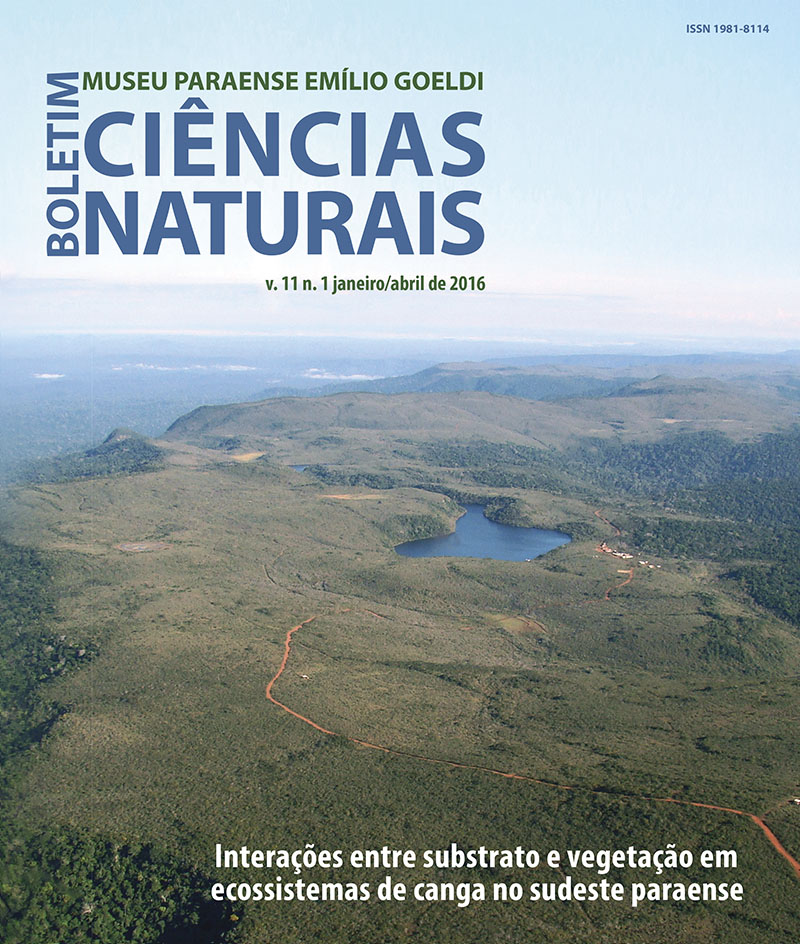Chemical and mineralogy of iron rich soils from Serra Sul de Carajás
DOI:
https://doi.org/10.46357/bcnaturais.v11i1.460Keywords:
Amazon, Plinthosols, Latosols, Ironstone, Iron rich soilsAbstract
The Serra Sul of Carajás located in the SE State of Pará in Amazon is the most extensive plateau in the mountain landscape of Serra de Carajás, possessing various ecosystems developed on ironstone formations with a high degree of conservation. Were analyzing 13 representative soils developed from iron band formation. The main types of soils are: Petric Plinthosols, Oxisols and Haplic Organosols, with strong association with different vegetation pattern. Soils are generally acid, dystrophic, with high Fe level (30-50%) and very low P levels, except in areas affected by biogenic contributions (fauna). In most soils crystalline forms of iron predominated over less crystalline forms, or amorphous. The isomorphic substitution of Fe for Al was very variable, with higher values in the goethite that in hematite. Hematite predominates over goethite in well-drained soil, with the opposite for lowland soils. Among the microelements, Mn showed the highest levels and high variability between soils. The goethite, hematite and maghemita are the predominant minerals in the clay fraction of these soils. We concluded that the Fe-rich ironstone parent material and pedobioclimatic conditions are the main drivers that control the diversity of soil characteristics studied. All mineral fractions of soils are developed from the degradation of ironstone crust.
Downloads
Published
Issue
Section
License
Publication means fully assigning and transferring all copyrights of the manuscript to the journal. The Liability Statement and
Assignment of Copyrights will be enclosed with the notice of acceptance. All the authors must sign the document and return it to the journal.






